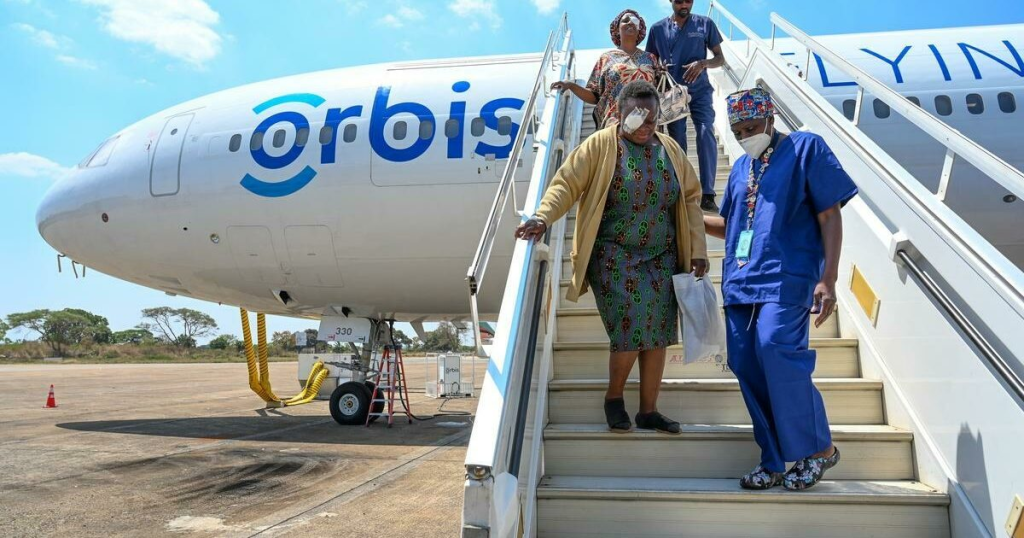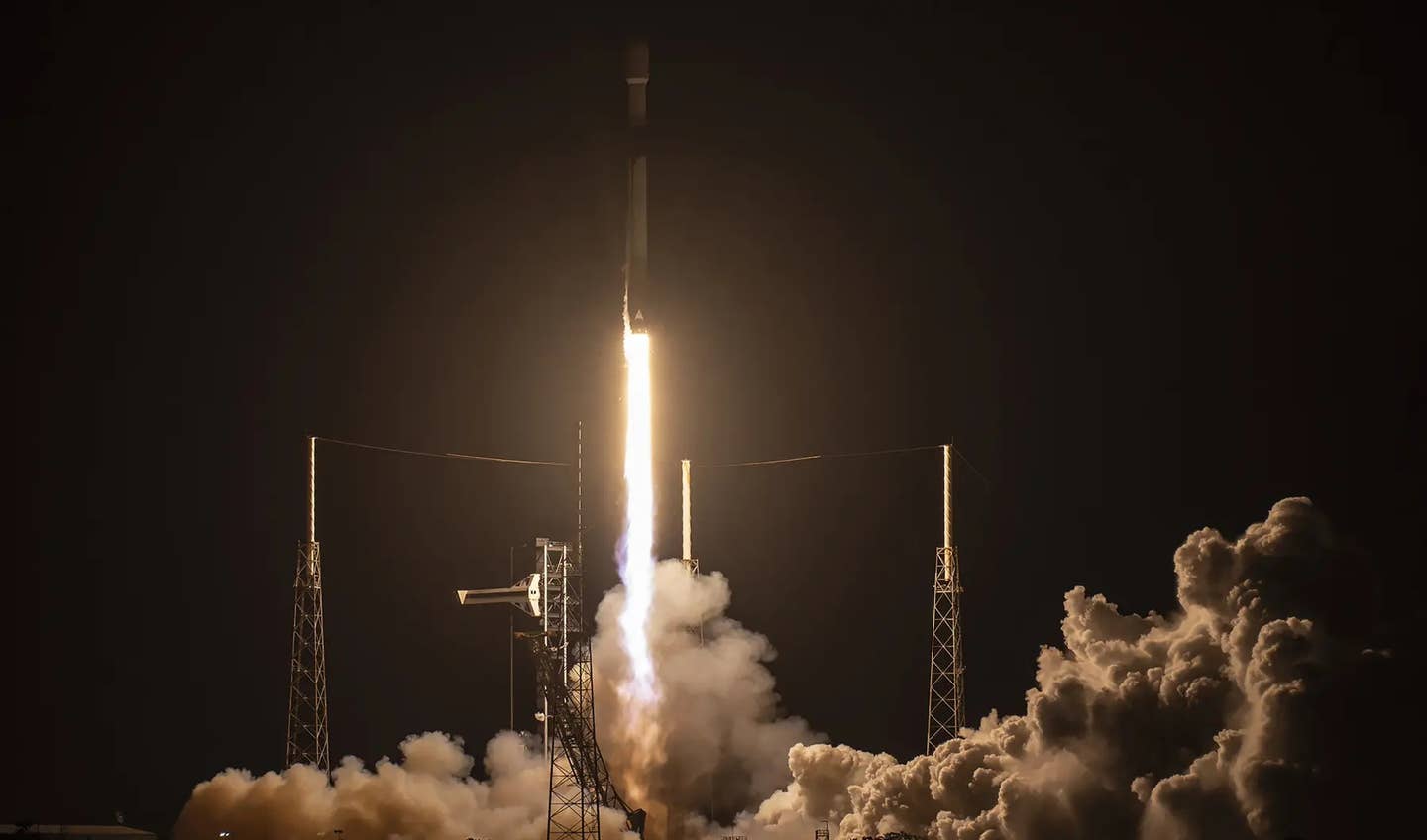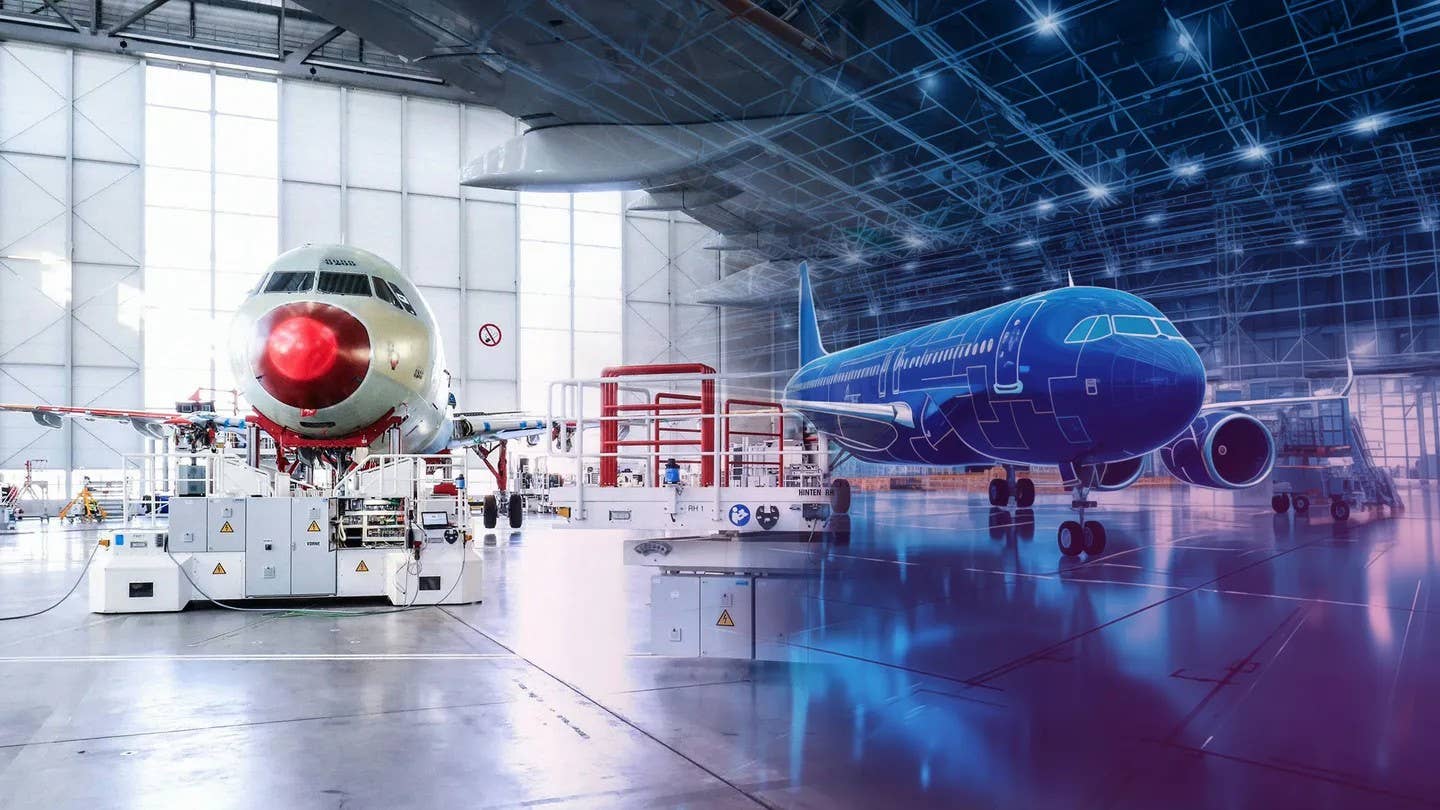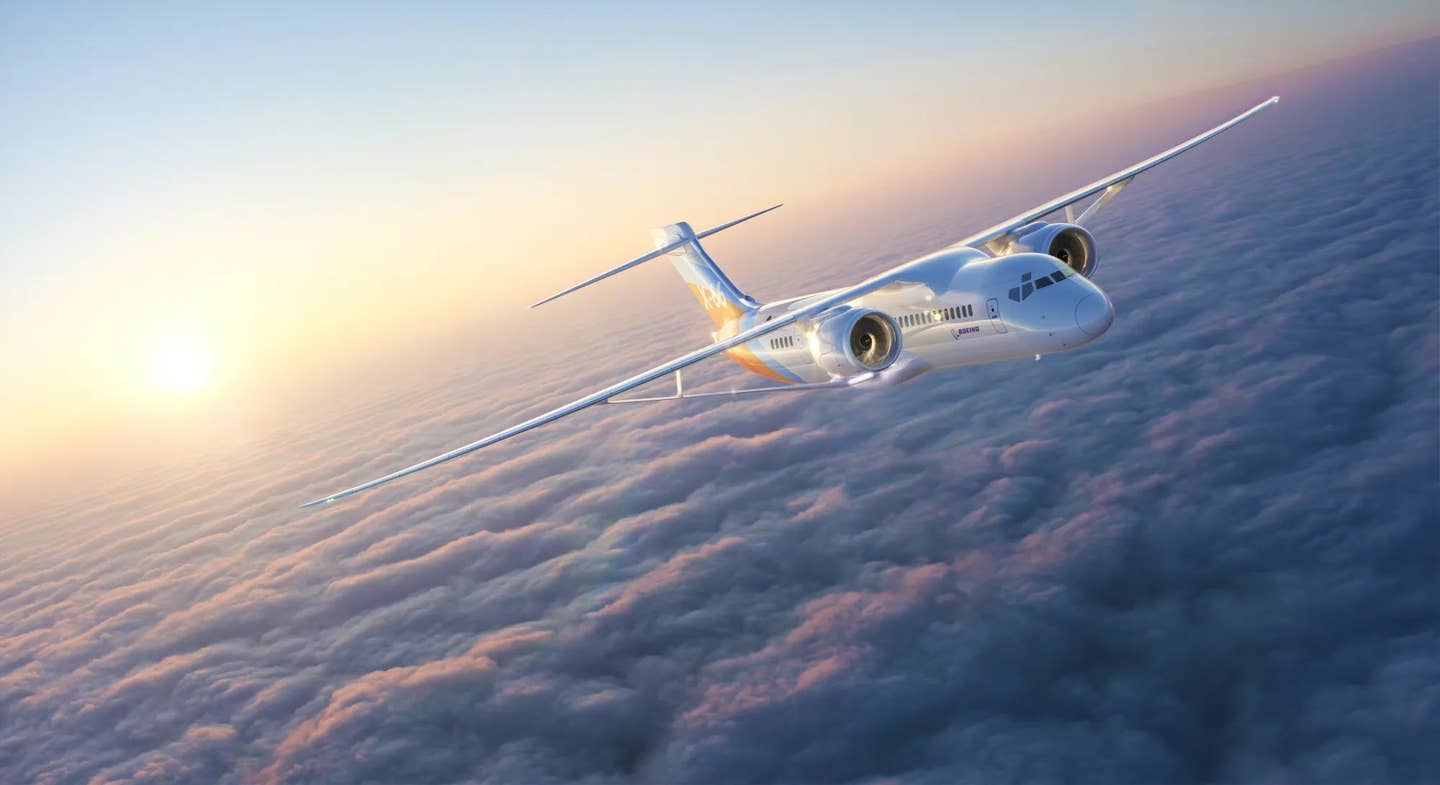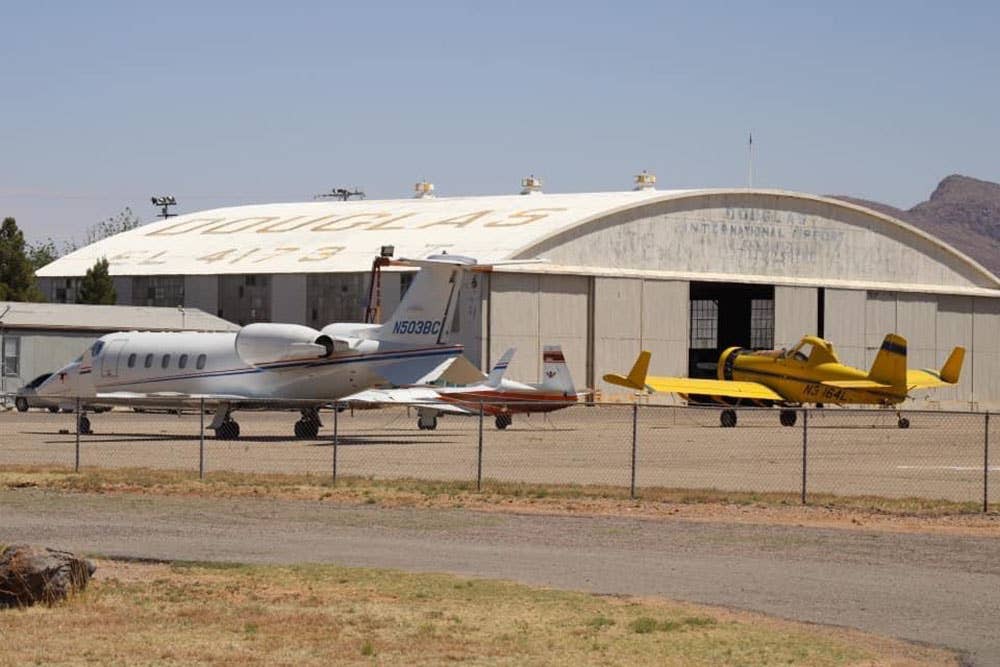
In order to be eligible for grants from the FAA, the airport needs to be part of the National Plan of Integrated Airport System (NPIAS). Douglas Municipal is not. [Douglas Municipal Airport: Save The Airport Facebook Page]
When you can't afford to make necessary repairs to something you own, such as your home or your car, one option is to sell it and let the buyer make the repairs. That is essentially what is happening in Douglas, Arizona, where the mayor and city council ordered the staff to appraise Douglas Municipal Airport (KDGL) and seek community input on its potential sale.
"We have received a lot of comments from the community saying not to sell the airport," said Luis Pedroza, deputy city manager and city treasurer for Douglas. "We have also received feedback from some to develop it, to potentially a fly-in community."
The airport is located on 642.38 acres approximately 3 miles east of town.
The airport has two runways: Runway 3/21 measures 5,760 by 75 feet. According to airnav.com, Runway 3/21 has cracks running across it ranging from one to six inches wide, the PAPI is out of service indefinitely, and there is brush within 200 feet from the runway threshold.
The other runway, 18/36, is made of dirt and measures 4,095 by 100 feet. Runway 18/36 is closed indefinitely owing to brush, rocks, and an uneven surface.
According to Pedroza, the mayor and city council directed the staff to put the airport out for bid after exhausting different options to fund the improvements needed in the runway.
"The runway needs serious work and recommendations from engineers are for full reconstruction estimated to cost $4.4 million," Pedroza said. "We depend on state funding that is very limited with not enough to go around to all state run airports. We put in that as part of the bid, that the private buyer must make improvements to the runway."
Pedroza points to the last pavement condition index (PCI) completed at the airport. The PCI is a metric used to evaluate the condition of pavement noting the severity and extent of distresses observed looking at spalling, rutting, scaling, and cracking. The PCI uses a scale of 0 to 100, with 100 being the best. Runway 3/21 at Douglas Municipal was rated a 19 out of 100.
In addition to the runway repairs, the city has identified capital needs costing $3.6 million and funding challenges include low grant opportunities, with an average annual subsidy for airport operations over $35,000.
What About FAA Grants?
In order to be eligible for grants from the FAA, the airport needs to be part of the National Plan of Integrated Airport System (NPIAS). Douglas Municipal is not.
The reason the airport is not part of the NPIAS is not clear, Pedroza said. "We do not know the reason. Possibly, because the federal government at some point gave the airport to the state and then later on the state gave it to the city and it contained the state designation.
“Also, potentially, the fact that Bisbee Douglas International, located 13 miles away, already carrying the NPIAS designation, prevented Douglas Municipal Airport from entering the NPIAS due to its close proximity."
The airport now known as Bisbee-Douglas International (KDUG) was built during World War II and used as a B-25 training base. After the war the 3,000-acre airport and its multiple paved runways was turned over to Cochise County. Today, the airport is a general aviation facility and home to the Arizona Department of Forestry Division, the U.S. Fire Service, and the USDA Natural Resources Conservation Service.
The nearest airport with commercial airline service is Tucson International Airport (KTUS), some 70 miles away.
Preserving a Colorful History
One of the conditions for purchase is that the buyer must respect the historical designation of Douglas Municipal Airport as the first international airport in the United States. Its proximity to the border with Mexico made it possible.
"In October 1928, the Sonoran government began clearing land just south of the Douglas Airport for a field in Agua Prieta, Sonora," said Cindy Hayostek, a local historian and publisher of Borderland Chronicles, a local quarterly publication.
"There was a gate in the international border fence and planes could land in one country, clear customs and taxi into the other country. The first international crossing took place February 4, 1929, a Ford Trimotor owned by Golden State Airways. This arrangement lasted into the 1930s."
The airport was one of the first in the United States to have scheduled air carrier service and was one of the stops along the Transcontinental U.S. women's air race.
"In 1931, Douglas Municipal had an A1A rating and was among the top 10 airports in America," said Hayostek. "It had lighted runways, radio service, and a roomy hangar. It was on commercial airline timetables, and on America’s first regularly-scheduled airmail route."
In addition, the airport was home to several evolving air carriers. "There was Standard Airlines, which became Western Air Express, which evolved into TWA. The main commercial line came to be American Airlines," she adds.
Some of the airport's history has been preserved in the Border Air Museum located at the airport. The museum was a gift to the city by Richard and Irma Westbrook, local citizens who loved aviation. Richard, a 1949 Douglas High School graduate, worked for NASA for several years. He did not live to see the museum come to be, but his wife gifted his collection of airline memorabilia to the city in 2002. Over the years other aviation artifacts have been added to the collection including a T-28 Trojan. The museum, along with an adjacent small park are not part of the property bid.
Plans to Keep the Airport Open
At this time, there are 11 aircraft based at Douglas Municipal.
Pedroza is adamant that the city wants to keep the airport open, and he is researching the idea of perhaps turning it into an airpark.
"The mayor and council are considering the concept and asked for community input. We are researching what this means for our designation as a state-run airport," he said, stressing that the buyer will have to agree to keep the airport open.
In addition, the city has come up with a list of other "must dos" that the buyer or buyers must agree to, including an agreement that the property reverts back to the city of Douglas if conditions are not met.
The buyer must keep the airport as a public-use facility and respect its historical value. The city must be able to hold four events at the airport a year, the runway must be rehabilitated within 24 months of purchase, and the airport park and the Border Air museum, although not part of the sale, must be protected.
The buyer must allow current hangar tenants to remain and then negotiate the leases on the T-hangars for at least 12 months. The buyer must rehabilitate the large hangar and allow for display of a replica of a locally famous bomber, an aircraft that was built during the war with Pancho Villa and used for air raids.
In addition, the buyer must repay the state of Arizona for depreciated value on all grants issued over the past 20 years in an amount of $467,000. FLYING made several attempts to reach the Arizona Department of Aeronautics but our calls and emails were not returned.

Sign-up for newsletters & special offers!
Get the latest FLYING stories & special offers delivered directly to your inbox

